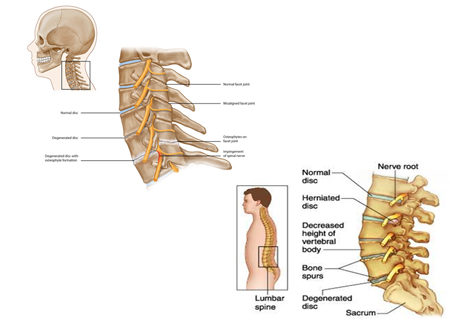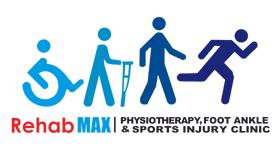CERVICAL AND LUMBER SPONDYLOSIS

The term spondylosis is used to define a generalized natural ageing process. Cervical and lumbar spondylosis results from the process of degeneration of the intervertebral discs and facet joints of the cervical and lumbar spine. Biomechanically, the disc and the facets are the connecting structures between the vertebrae for the transmission of external forces. They also facilitate cervical spine mobility.
On radiological finding, 90% of men older than 50 years and 90% of women older than 60 years have evidence of degenerative changes in spine. 70% Of individuals may show bad changes on X- ray but are asymptomatic. Sex ratio reports have been variable but are essentially equal.
Symptoms:
- Cervical spondylosis:Cervical radiculopathy – Pain most often occurs in the cervical region, the upper limb, shoulder, and/or interscapular region, numbness, heaviness, weakness in upper limb, reduced grip strength
- Lumbar spondylosis:
- Neurologic claudication, which includes: lower back pain, leg pain, numbness, heaviness, weakness when standing and walking
Treatment:
- In the acute phase, taping can be done to offload the overused structures
- Spinal mobilization to improve mobility of the spinal segments, thus improving overall mobility
- Dry needling and stretching of paraspinal to relax the tight muscles around the neck and back
- After a detailed postural examination, the patient will be taught a basic posture correction exercises program to correct the postural deviations caused by muscle weakness or tightness
- Strengthening exercises for the scapula retractors, sub-occipitals, core, transverse abdominis, and gluteal muscles, as these muscles provide support and stability to the spine
- In case of any neural symptoms, neural mobilization helps in improving nerve mobility and pliability
- In severe cases, surgery needs to be done after which post-surgery rehabilitation is necessary

